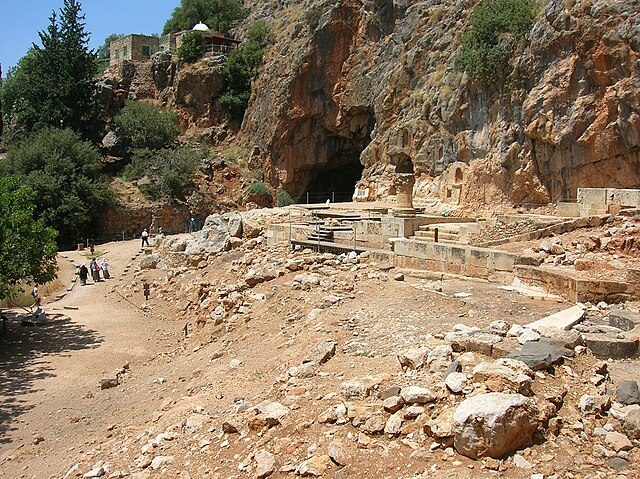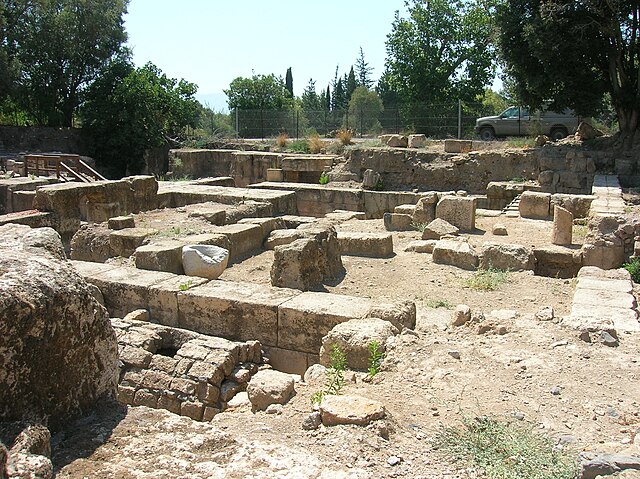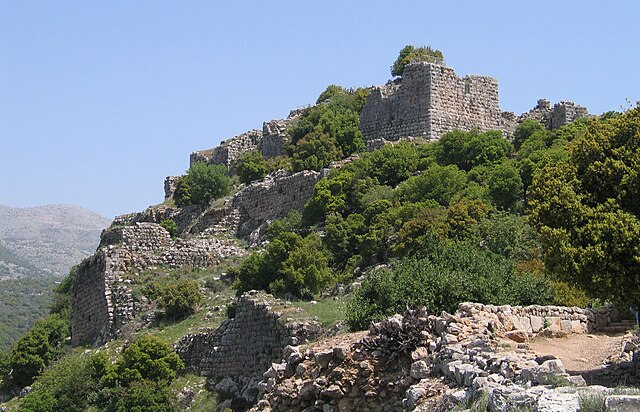Banias or Banyas is a site in the Golan Heights near a natural spring, once associated with the Greek god Pan. It had been inhabited for 2,000 years, until it was abandoned and destroyed following the Six-Day War. It is located at the foot of Mount Hermon, north of the Golan Heights, in the Israeli portion. The spring is the source of the Banias River, one of the main tributaries of the Jordan River. Archaeologists uncovered a shrine dedicated to Pan and related deities, and the remains of an ancient city founded sometime after the conquest by Alexander the Great and inhabited until 1967. The ancient city was mentioned in the Gospels of Matthew and Mark, under the name of Caesarea Philippi, as the place where Jesus confirmed Peter's confession that Jesus was the Messiah; the site is today a place of pilgrimage for Christians.
The spring of Banias with the Cave of Pan in background
The remnants of the temple of Pan with Pan's grotto. The building with the white dome in the background is the shrine of Nabi Khadr.
An artist's reconstruction of the Sanctuary of Pan
The remains of the palace of Philip II and/or Agrippa II
The Golan Heights, or simply the Golan, is a hilly region in southwest Syria. Most of the region has been occupied by Israel since the 1967 Six-Day War, and subject to a de facto Israeli annexation in 1981. Geologically, the term refers to a wider basaltic plateau bordered by the Yarmouk River in the south, the Sea of Galilee and Hula Valley in the west, the Anti-Lebanon with Mount Hermon in the north and Wadi Raqqad in the east.
Temple of Pan at Banias and the white-domed shrine of Nabi Khadr in the background.
Ruins of the ancient Jewish city of Gamla, home to one of the earliest known synagogues. The city was destroyed by the Romans during the First Jewish–Roman War
Nimrod Fortress, built by the Ayyubids and hugely enlarged by the Mamluks
A minefield warning sign in the Golan







